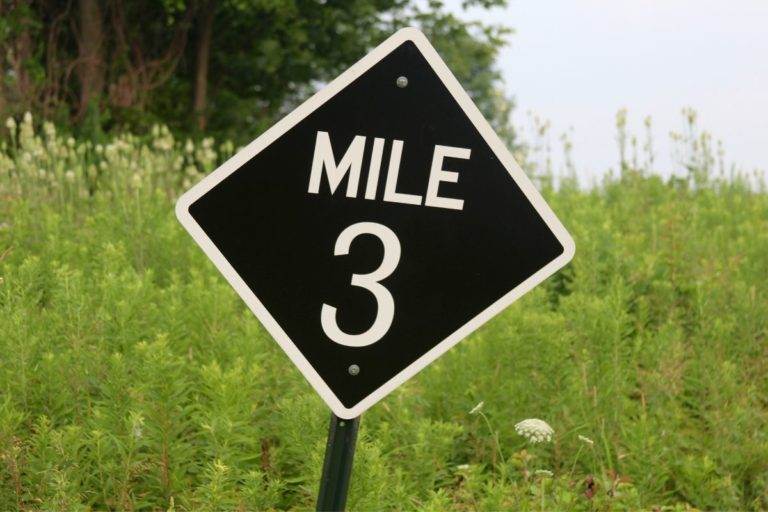Walking Breaks While Running – Is It Good And How To Eliminate?

Most runners think that you only walk when you can’t run anymore. However, walking breaks can also HELP you become a better runner, whether new or experienced.
In this article, we will look at whether it is bad to take walk breaks and how you can eliminate them from your runs.
- Taking walk breaks during runs prevents new runners from working too hard.
- Beginners can cover longer distances than just running.
- Long runs don’t seem too intimidating to a beginner when walking and running.
Walking Breaks While Running – Good or Bad?
Walking breaks aren’t bad. Walk stops are commonly used to increase the running distance.
For new runners, combining walking and running is a great tool. Don’t worry about walking parts of your route. Use them as needed to achieve the distance.
Walking breaks are helpful when you first start running, but the benefits might fade over time. But it is never wrong to take a walk break.
Why Do Runners Take Walking Breaks?
There are many reasons why also seasoned runners might end up taking walking breaks in their runs.
It is occasionally challenging to run continuously due to external factors. When you go uphill or have a strong headwind, you might need walking parts to prevent you from working too hard.
Sometimes recovery from illness or injury hinders you from running. Still, you can start up by having those walking stops.
However, it can also be a habit. You might not need those breaks, but you have used to doing so. If you find that you are still taking regular walking stops, it might simply be muscle memory, especially if it happens at the same point.
Unregulated breathing and pace can also increase the need for walking breaks during your run.
Do Walk Breaks Reduce Injury?
There are some runners that cling to their walk stops like a comfort blanket. There seems to be a common belief among some runners that taking walk breaks will reduce their risk of injury.
However, there is no evidence to suggest that you are less likely to pick up an injury if you take walk breaks.
Injuries are avoided through performing correct warm-ups, cool downs, and wearing supportive footwear.
While overtraining can cause injury, running 5K consistently is not overtraining, nor will it cause an injury in and of itself.
How To Eliminate Walk Breaks
Walk breaks are not forever and can be eliminated from your runs fairly easily.
Once you identify the reason why you need to walk, you can begin to reduce and eventually stop them altogether.
1. Identify The Reason For The Walk Break
The first step in eliminating walking stops is to identify why you are taking them. For some runners, it will be a habit or a mental barrier.
You can identify this by noticing where you are taking your stops.
If you walk always at the same point on your runs, it is likely a habit that is causing them.
Alternatively, if you are taking walk breaks to get your breath back, you may be running at a pace that is too intense.
If you tend to give everything you have in your run straight away and have to break to breathe, your pace may need adjusting.

2. Reduce Walk Break Length
Once you have established what is causing you to take frequent walk breaks during your runs, you can begin to reduce them.
The easiest way to do this is to cut down the amount of time that you walk for.
To do this, keep taking the same amount of breaks, but cut their length by 30 seconds.
You should be able to cut the amount of time you are walking on each run. Keep reducing the length of your walking until they are less than a minute long.
3. Reduce Walk Break Frequency
Once the duration of your walk break has been reduced to a minute or less, you can begin to reduce the frequency of your stops.
If you take a walk break every 3 minutes on your runs, you could extend that period to 5 minutes. This will reduce the frequency and the overall number of breaks.
With each run, you will be able to increase the time in between breaks.
4. Walk Only As Necessary
As you extend the gaps between your walk breaks, you can begin to pay less attention to them.
Instead of scheduling walking after every few minutes, simply walk when it is necessary.
This may mean taking a short break halfway through your run, or near the end. Sometimes, you will not need to take a walk break at all during your run.
5. Eliminate Walk Breaks
Finally, once you begin to complete runs without taking a walk break, that should become the standard.
Your stamina will have adjusted to completing a regular run without walking.
When To Reintroduce Walk Breaks?
There will be some occasions where reintroducing walking will be appropriate or necessary.
If you are extending the distance of your run by a significant increment, it may be necessary to take walk stops for the first week or so.
And if you are going for a longer race, you can use walking breaks. For example, if you can finish a 5K run without walking, you can safely progress to 10K by mixing walking and running. While it won’t be a good time for a 10K, it’s an excellent start for longer races.
It is important to make sure that you don’t let it become a regular occurrence.
Similarly, if you have picked up an injury and have had to take a break from running for a while, it is appropriate to take walk breaks.
This can help prevent further injury while you finish recovering.
Final Thoughts
Although walk breaks aren’t inherently bad, they aren’t great for running.
They hold you back from reaching your full potential and can reduce the benefits that you gain from running.
Walk breaks are easy to eliminate over a short time period, and can be reintroduced as necessary.






